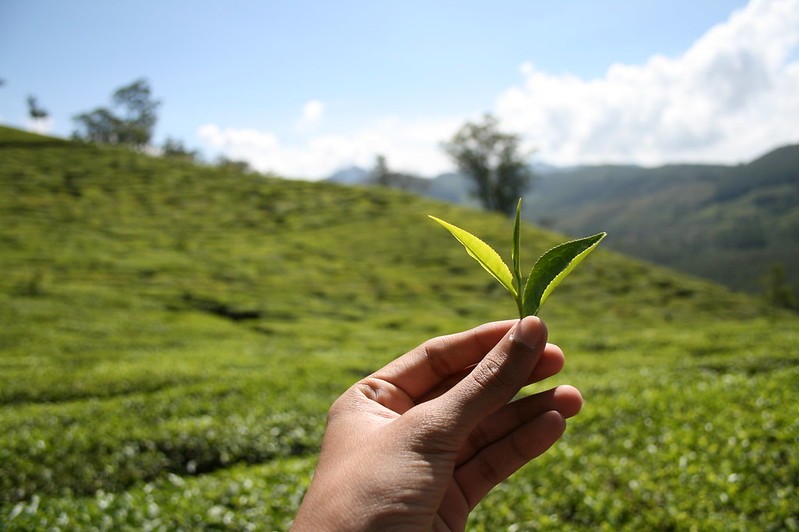Jackfruit
Jul 03, 2024

Sri Lanka is renowned as the "Tea Isle" and can satiate the needs of any tea enthusiast anywhere in the world. Sri Lanka is the third-largest exporter of tea in the world, with an export market share of around 15%. Yet, when it comes to traditional black tea, Sri Lanka is without a doubt the world's top producer.
Black tea is the most famous Ceylon tea type. The two main forms of black tea are orthodox and CTC. Whereas orthodox is a highly-skilled, speciality, and expensive derivation, CTC, sometimes known as cut, tear, and curl (CTC), is a very inexpensive mass production variation.
White tea is another well-liked tea variety that has undergone partial processing, and green tea is produced from leaves that do not undergo the oxidation process. There are more value-added teas namely flavoured tea, organic tea, instant tea, iced tea, and ready-to-drink tea etc.
The Lion Logo trademark for Ceylon Tea symbolizes the tradition and spirit of tea cultivated in Sri Lanka. It is a sign of quality. Simply, it serves to distinguish Sri Lankan tea from other teas of mixed origins.
The Sri Lankan Tea Board (SLTB), the principal administrative and regulatory organization for the country's tea sector, owns the lion logo.

The Lion Logo, inspired by its rich tradition, certifies that it is 100% pure Ceylon Tea grown, harvested, and packed only in Sri Lanka while adhering to the highest quality standards stipulated by the Sri Lanka Tea Board.
Every batch of tea with the Ceylon Tea Lion Emblem can be traced back to its source, assuring complete responsibility and transparency with every sip. Sri Lankan tea packets and tea bags carrying the Lion Logo quality certification must be packed inside the country. Foreign importers, packers, and distributors are not permitted to use the Lion Emblem on their tea packs, even if they exclusively contain Ceylon Tea only. Only consumer packets of Ceylon Tea may use the lion symbol.
The teas are grown on "Tea Island" range from small leaf to bigger particle size, as well as from light, aromatic cup character to bold, colorful brew. While numerous sorts of tea may be obtained under the national brand "Ceylon Tea" owing to nature's generosity, the circumstances that breathe life into the tea stay both immaculate and virgin. The tea bush thrives on sloping terrain and is produced mostly in Sri Lanka's central highlands as well as the southern interior rainforest foothills at high, medium, and low elevations. As a consequence, the consumer receives a fantastic cup of tea with excellent quality and taste.
Most of the world-famous tea brands and blends have been enhanced by a percentage of Ceylon Tea. Sri Lanka produces tea to suit every palate, and this has been the country's tea industry's defining feature. Indeed, geography, soil, height, climate variations, the two distinct monsoons, and wind velocity are all factors that influence the final outcome. As a result, tea is a product with an endless number of variations. Ceylon Tea thrives within these conditions and is nearly hard to replace with other origins.

The potency and strength of Sri Lanka's industry have been its variation in the specialization of its orthodox tea technique. The primary tea-growing regions of Sri Lanka include Nuwara Eliya, Uda Pussellawa, Uva, Dimbula, Kandy, Ruhuna, and Sabaragamuwa. Sri Lanka has gained a reputation as a producer of the greatest tea in the world throughout the years, and Ceylon Tea is synonymous with quality and taste. The Ceylon Tea name and seven agro-climatic regional tea names have been registered as geographical indications (GI) to discourage overseas packers from misusing Sri Lankan teas and to give priority to the original product.
Although Ceylon Tea accounts for 6% of the global tea output, the bottom-line is not the volume but the value. All foreign tourists who visit Sri Lanka's tea country recognize the distinct difference between Ceylon Tea and rival sources. While the bulk of tea-producing countries use cutting-edge machinery to cut costs, dedicated Sri Lankans continue to use hand plucking - a highly skilled but time-consuming practice.

Sri Lanka Tea Board organizes Ceylon Specialty Estate Tea of the Year Competitions and Charity Tea Auctions to publicize straight-line garden markings and to reward quality excellence by Sri Lankan tea companies. The latest introduction to the promotional radar is the Tea Master Cup Competition classified under four main categories namely tea preparation, tea tasting, tea pairing and tea mixology.
A wide range of expertly crafted Ceylon Teas and tea blends are available to cater to specific consumer preferences.
So, don't forget to look for the Lion Logo to ensure that you are purchasing the famed and authentic Ceylon Tea product!